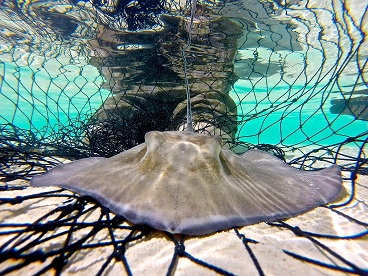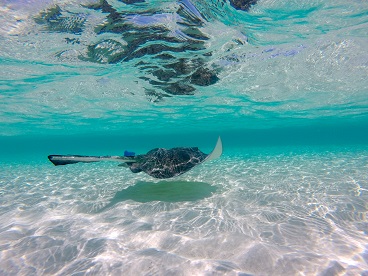Here at the Cape Eleuthera Institute (CEI), members of the Shark Research and Conservation Program are trying to unlock some of the many mysteries surrounding stingrays. Much like their shark ancestors, there are still many myths and misconceptions about these typically mild mannered creatures. Once believed to be nothing more than vermin on local reefs, scientists are now beginning to appreciate their true value as mesobenthic predators. Through a process called bioturbation, rays can alter ecosystems physically, chemically, and biologically. Often overlooked and underappreciated, these amazing animals play a vital role in maintaining a healthy marine ecosystem.

The CEI Stingray Project, led by Dr. Owen O’Shea, began in January of 2015, and is the largest study of its kind in The Bahamas. The purpose of this research on stingrays is to gain valuable baseline data regarding their habitat use, growth rates, behavior, daily activity budgets, genetic connectivity, demography and feeding preferences. Rays are caught via spot seining along local creeks, coasts and offshore sand cays and are measured, tagged, sampled for tissue and blood, and released. Together with the help of our Island School students, visiting Educational Programs and undergraduate students, Dr. O’Shea has caught 175 stingrays across both species, including 59 recaptured individuals.

Since these rays occupy coastal and nearshore environments, it is believed they are actually more susceptible to anthropogenic impacts such as habitat loss and degradation and overfishing when compared to offshore populations of fish. It is critical that further research is conducted to learn more about these animals. This research will allow for the formation of a more solid knowledge base as well as an efficient conservation and management framework for both species and the habitats that support them.